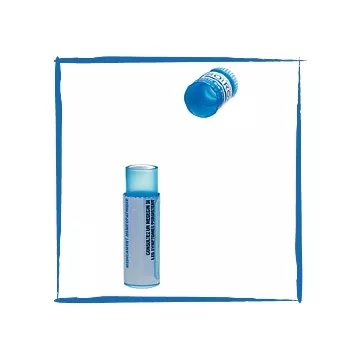On Soin-et-Nature, explore the specifics of Korsakovian homeopathic dilutions (K), a special dynamization method used in particular for in-depth treatments. Unlike Hahnemannian (CH) dilutions, K dilutions are distinguished by a unique preparation protocol, adapted to prolonged action on chronic or deep-rooted conditions. With Rocal-Lehning strains, gain access to a tailor-made, effective and well-tolerated approach to long-term support for your body's balance.
More details


In homeopathy, two major dilution methods coexist: Hahnemannian dilution, the best-known, and Korsakovian dilution, which is less widespread but just as significant. Each is based on a specific preparation protocol, influencing the nature and intensity of the drug's therapeutic action.
CH (Centesimal Hahnemannian) dilution involves taking 1/100th of an active solution (mother tincture), mixing it with 99 parts of solvent and shaking it vigorously, a process known as dynamization. This operation is repeated as many times as the dilution number indicates: a 9 CH has been dynamized 9 times sequentially.
K (Korsakovian) dilution was developed by Simeon Nicolaevitch Korsakoff. It is based on a different principle: the bottle containing the mother tincture is completely emptied, and the residue adhering to the walls is considered sufficient to transmit the energetic information. The bottle is then filled with solvent, shaken, emptied again, and the process repeated at each stage to obtain successive dilutions (1K, 2K, 3K...).
With the Korsakovian method, the original substance is not measured precisely at each stage, as in the Hahnemannian method. Instead, the residual presence of the active substance on the walls of the container is sufficient to impregnate the solvent in the next step.
Here's how it works in practice:
This approach makes it possible to achieve very high dilutions quickly, with savings in raw materials, while preserving the overall effect.
Korsakovian and Hahnemannian dilutions do not overlap exactly, but there are approximate equivalents to help patients and professionals find their way around:
| Korsakovian dilution | Hahnemannian equivalence (CH) |
|---|---|
| 6 K | Approx. 4 CH |
| 30 K | Approx. 5 CH |
| 200 K | Approx. 7 CH |
| 1 000 K | Approx. 9 CH |
| 10 000 K | Approx. 15 CH |
| 50 000 K | No direct correspondence |
| 100 000 K | Beyond 30 CH |
K dilutions are often described as more global in their action than CH dilutions, due to the particularity of their manufacturing method. They are mainly proposed for in-depth or systemic treatments.